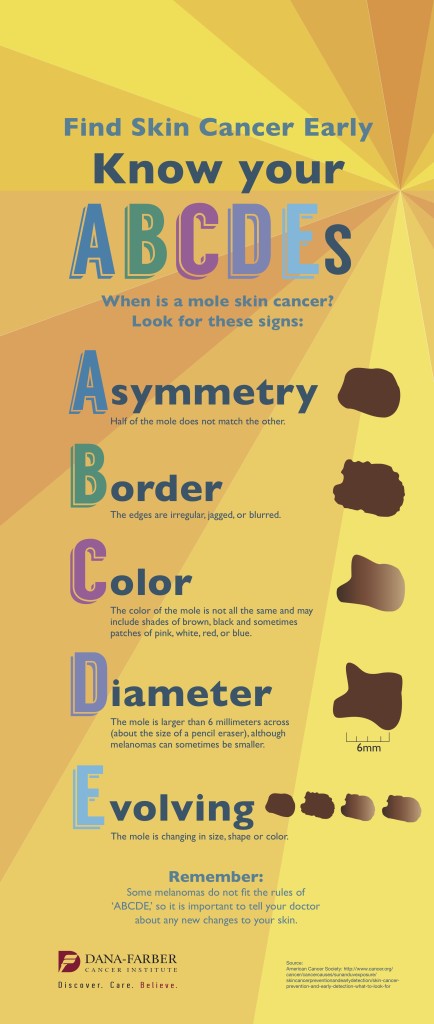Skin cancer is very common: One in five Americans will develop the disease at some point in their lifetime. Usually, it is caused by overexposure to the sun and harmful ultraviolet (UV) rays, such as those in tanning beds. Melanoma, the least common but most dangerous form of skin cancer, typically begins in a mole and can occur anywhere on the body.
While many Americans see dermatologists for issues unrelated to cancer, few know when to see one for skin cancer screenings, or how often to go.
If you have many moles (more than 50), atypical moles, or a family history of melanoma, you should have an annual evaluation by a dermatologist.
When deciding if you should see a dermatologist, you should also keep these risk factors in mind:
- Having light or fair skin (especially with light-colored or blue eyes, and blond or red hair).
- Not tanning easily
- Developing freckles easily
- Having frequent sunburns
- Having one or more blistering sunburn, especially at a young age
- Living somewhere with a high degree of sun exposure
Read More:
It is also important to check your own skin regularly for new or changing moles or birth marks – whether or not you have a family history or the risk factors above.
The American Academy of Dermatology (AAD) recommends using the “ABCDE” method to self-screen monthly for melanoma in moles and birthmarks:
- A – Asymmetry, or when one half of the mark appears different than the other.
- B – Border, when the mark has an irregular, scalloped, or poorly defined border.
- C – Color, if the mark is varied from one area to the other. It might have shades of tan, brown, black, or be white, red, or blue.
- D – Diameter. Melanomas are usually bigger than 6mm, or the size of a pencil eraser. In some cases, they can appear smaller.
- E – Evolving, when a mole or mark looks different than others on your body, or different than it used to.
Learn more about melanoma treatment and research at Dana-Farber.


I am glad to know that dermatologists can help with skin cancer and other skin conditions. It is good to learn that if your family has a history of melanoma, you should have an annual evaluation by a dermatologist. I have also heard that if you have abnormal moles that change colors, you should seek help from a dermatologist. http://associatedskincare.com/moles/